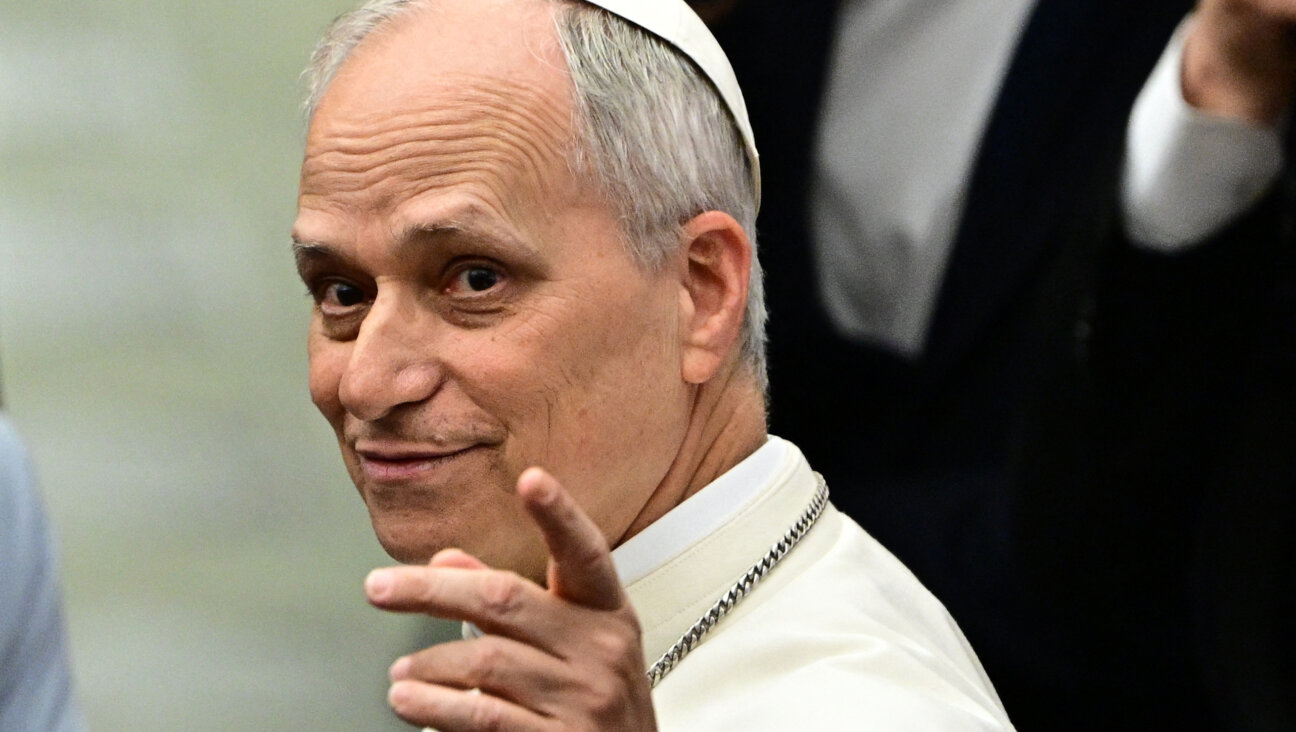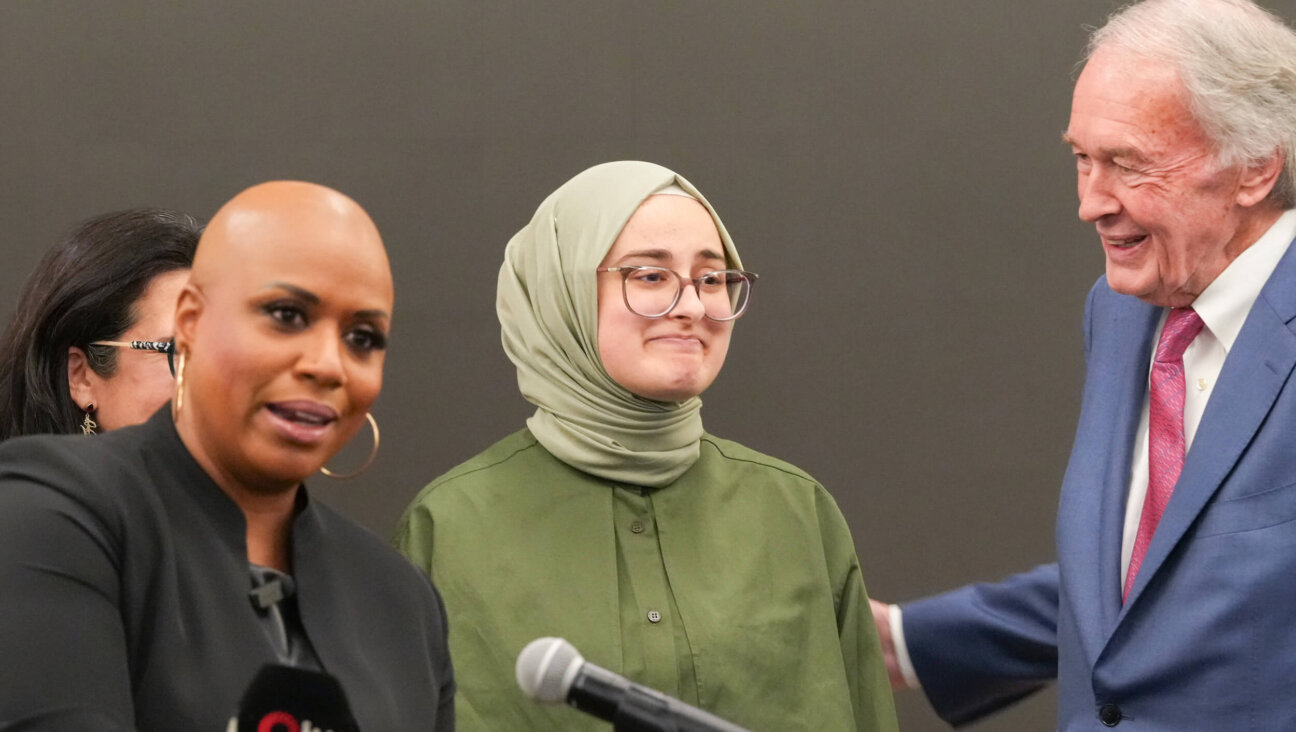Hundreds Gather For Passover Seder Commemorating Warsaw Ghetto Uprising

Image by Getty Images

Captured Jews are led by German Waffen SS soldiers to the assembly point for deportation during the Warsaw Ghetto Uprising. Image by Wikimedia Commons
Editor’s note: The original version of this story appeared with the headline “Warsaw Ghetto To Have A Passover Seder For The First Time Since Its Uprising”. This was far from the first — in fact, since World War II, there have been multiple Seders in the area that was once the Warsaw ghetto and the prewar Jewish neighborhood of Muranów.
In what was once the Warsaw Ghetto, hundreds of Jews are gathering for a seder on April 19th, the Jerusalem Post reported. Shalom Ber Stambler, Chabad’s Chief Rabbi of Poland will be officiating the Seder, which will include participants from Israel, Europe and the United States.
The date is significant in Jewish history, as it is the 76th anniversary of the Warsaw Ghetto Uprising, when Jewish inmates, led by Mordechai Anielewicz, led a doomed revolt against German troops.
The seder is expected to be separated into three groups, based on the language the Seder-goers speak. Yossi Stambler, Rabbi Stambler’s thirteen-year-old son, will be conducting the seder entirely in Hebrew, while his father leads one entirely in Polish.
According to Rabbi Stambler, this event is “very significant for us to be celebrating Jewish holidays.” With the seder in particular, he says that it “symbolizes Jewish freedom and the day that we united as a nation, in a place that not long ago, others sought to destroy us.”
Among the attendees will be Albert Stankovsky, the director of the upcoming Warsaw Ghetto Museum.
“Before the war, approximately one-third of the Warsaw was Jewish,” he told the Jerusalem Post. “Commemorating pre-war Jewish Warsaw and celebrating the growth of the current Jewish community is of utmost importance to us.” He also explained that “the Passover celebration organized by Rabbi Shalom Ber Stambler and Chabad Lubavitch is a vital part of this process,” as the goal for the museum is to “preserve, for future generations, the memory of the Jews of Warsaw, who were imprisoned behind ghetto walls during the German occupation and subsequently murdered in the German camps.”
Adrianna Chaviva Freedman is the Social Media Intern for the Forward. You can reach her at [email protected] or on Twitter @ac_freedman
The Forward is free to read, but it isn’t free to produce

I hope you appreciated this article. Before you go, I’d like to ask you to please support the Forward.
Now more than ever, American Jews need independent news they can trust, with reporting driven by truth, not ideology. We serve you, not any ideological agenda.
At a time when other newsrooms are closing or cutting back, the Forward has removed its paywall and invested additional resources to report on the ground from Israel and around the U.S. on the impact of the war, rising antisemitism and polarized discourse.
This is a great time to support independent Jewish journalism you rely on. Make a gift today!
— Rachel Fishman Feddersen, Publisher and CEO
Support our mission to tell the Jewish story fully and fairly.
Most Popular
- 1

Fast Forward Ye debuts ‘Heil Hitler’ music video that includes a sample of a Hitler speech
- 2

Opinion It looks like Israel totally underestimated Trump
- 3

Culture Is Pope Leo Jewish? Ask his distant cousins — like me
- 4

Fast Forward Student suspended for ‘F— the Jews’ video defends himself on antisemitic podcast
In Case You Missed It
-

News In Edan Alexander’s hometown in New Jersey, months of fear and anguish give way to joy and relief
-

Fast Forward What’s next for suspended student who posted ‘F— the Jews’ video? An alt-right media tour
-

Opinion Despite Netanyahu, Edan Alexander is finally free
-

Opinion A judge just released another pro-Palestinian activist. Here’s why that’s good for the Jews
-
Shop the Forward Store
100% of profits support our journalism
Republish This Story
Please read before republishing
We’re happy to make this story available to republish for free, unless it originated with JTA, Haaretz or another publication (as indicated on the article) and as long as you follow our guidelines.
You must comply with the following:
- Credit the Forward
- Retain our pixel
- Preserve our canonical link in Google search
- Add a noindex tag in Google search
See our full guidelines for more information, and this guide for detail about canonical URLs.
To republish, copy the HTML by clicking on the yellow button to the right; it includes our tracking pixel, all paragraph styles and hyperlinks, the author byline and credit to the Forward. It does not include images; to avoid copyright violations, you must add them manually, following our guidelines. Please email us at [email protected], subject line “republish,” with any questions or to let us know what stories you’re picking up.
















